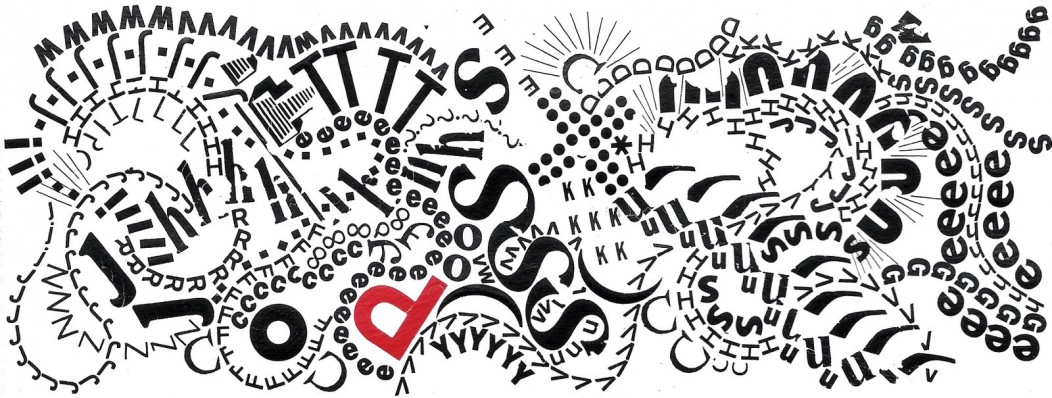Review of Derek Beaulieu’s Surface Tension by Philip Terry
All poetry has a visual element. Even the poems of Philp Larkin depend for their effects on how the words are set out on the page, and sometimes poets – Dylan Thomas and George Herbert to name just two – bring the visual aspect of their work to the fore, creating visual poems, like ‘Vision and Prayer’ and ‘Easter Wings.’ The tradition reaches its apotheosis in the concrete poems of the Brazilian poet Augusto de Campos, and it has had a recent efflorescence in the work of digital poets, like André Vallias and Eric Zboya.
Derek Beaulieu, in Surface Tension (Coach House Books, 2023), enters this rich tradition armed with Letraset (a largely defuct bi-product of the petroleum industry) and digital photocopiers, able to enlarge, reconfigure, and distort visual images. The word, in these poems, is all but banished to the margins of the poetic world. If we read the poems closely, we can find words – ‘rip,’ ‘din,’ ‘lid’ – but they concede the arena of the poem, with only a muted cry of protest, to the letter itself. It was Mallarmé, in his Un coup de dés n’abolira jamais le hasard (A throw of the dice will never abolish chance) of 1897 who first unleashed the explosive typographic potential of poetry – here Beaulieu takes this process to its logical conclusion by unleashing the potential of the letter itself. Poem after poem presents a dance of letters, mirroring each other in a palindromic pas de deux, where the eye wanders, unfettered by the pursuit of meaning, into a world of visual display and celebration, as we see arrays of letters shift and turn, distort, enlarge, and seek to liberate themselves altogether from the page as they morph in size and shape into ever new forms and potential crystallizations. It’s baffling at times, exhilarating too, but Beaulieu throws a rope to the reader – are we ‘readers’ still as we ‘read’ this book, or are we something new? – in the form of aphoristic statements which punctuate the sequence in place of traditional punctuation, which like words is banished to the margins of this text (only the occasional full stop and comma survives):
These poems begin in recognition: as soon as we see them, we know a particular object is in question because only that object has just this (and no other) emblem.
They aren’t stains; they’re pools. There’s space here, active surfaces, ponds with depth.
Writing is not about something; it is that something itself.
Literature is not craftmanship but an industrial process where the poem is a prototype rather than artistry.
The contemporary poem is an understanding of juxtaposition. It focuses on the arrangement of letters and material. Headlines, slogans, groups of sounds and letters give rise to forms that could be models for a new poetry just waiting to be taken up for use.
Beaulieu has taken note of the ur-sign of neo-liberalism and of capitalism, the ever-present logo, and reinhabited it from the inside, creating logos without products, a body of schizoid writing without anything to sell, without an interpellative agenda of power and subjection, that free us from the norms of purchase and exchange. In the book’s final sequence, ‘Dendrochronology,’ morphing combines with an accumulative zoom-in, that metamorphose letters into shapes that bear an uncanny resemblance to the cross-sections of trees: from the origins of Letraset in oil (with all the minings and appropriations of land, and displacements of peoples and habitats that that implies) the poems return us to a state of unfettered nature, to a space that we can once more inhabit, a space where we can play, where we can begin again.
ABOUT THE AUTHOR
Philip Terry was born in Belfast, and is a poet, translator, and a writer of fiction. The Penguin Book of Oulipo, which he edited, was published in Penguin Modern Classics in 2020, and Carcanet published his edition of Jean-Luc Champerret’s The Lascaux Notebooks, the first ever anthology of Ice Age poetry, in April 2022.

